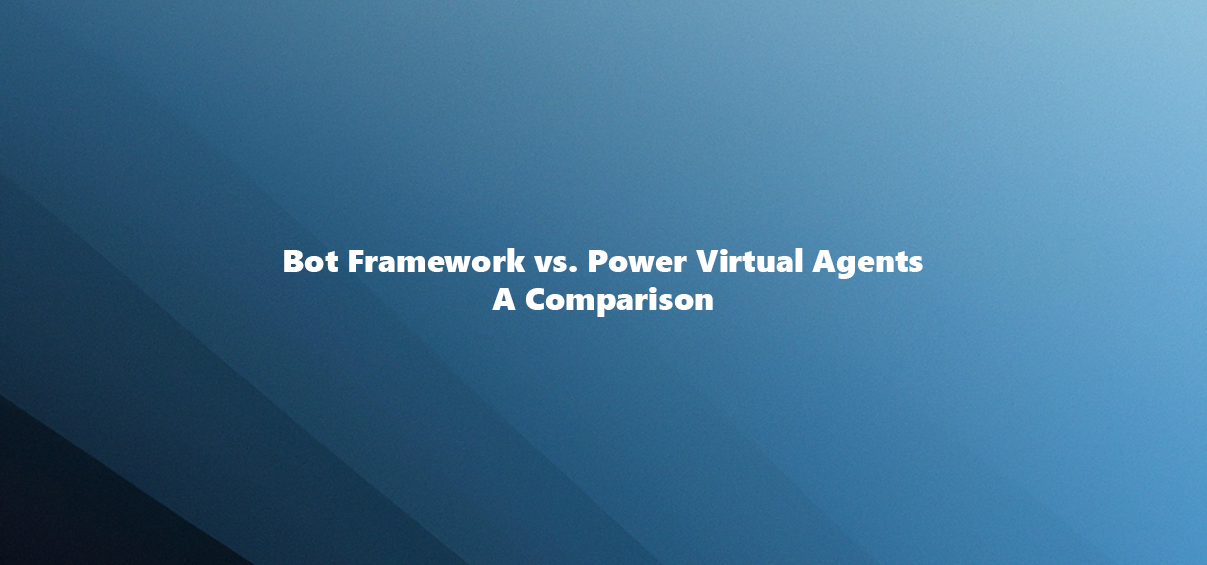Bot Framework - Power Virtual Agents comparison

In recent years, there has been a growing interest in chatbots and virtual agents as businesses seek to improve their customer service and automate their workflows. Microsoft, one of the leading tech companies in the world, offers two popular options for building chatbots and virtual agents: the Microsoft Bot Framework and Power Virtual Agents. In this article, we’ll compare and contrast the two options to help you decide which one is right for your needs.
Overview of the Microsoft Bot Framework and Power Virtual Agents
The Microsoft Bot Framework is a platform that allows developers to create intelligent bots for a wide range of platforms, including web, mobile, and even voice assistants like Amazon Alexa and Google Assistant. The Bot Framework provides developers with a set of tools and SDKs that enable them to create bots that can understand natural language and carry out complex conversations with users.
Power Virtual Agents, on the other hand, is a no-code platform that allows business users to build chatbots and virtual agents without any programming knowledge. Power Virtual Agents offers a drag-and-drop interface that allows users to create and deploy chatbots quickly and easily.
Ease of Use
One of the key differences between the Bot Framework and Power Virtual Agents is their ease of use. While the Bot Framework provides developers with a robust set of tools for building chatbots, it requires programming skills and technical knowledge to use effectively. Developers need to have experience with programming languages like C# or JavaScript, as well as knowledge of machine learning and natural language processing.
In contrast, Power Virtual Agents is designed to be used by business users with no coding experience. The platform provides a simple drag-and-drop interface that allows users to create chatbots and virtual agents using pre-built templates and workflows. This makes it much easier for non-technical users to build and deploy chatbots.
Functionality
When it comes to functionality, the Bot Framework offers more flexibility and customization options than Power Virtual Agents. With the Bot Framework, developers can build custom chatbots that can handle complex conversations and integrate with other services and platforms. The Bot Framework also provides access to Azure Cognitive Services, which includes powerful tools for natural language processing, speech recognition, and sentiment analysis.
Power Virtual Agents, on the other hand, is designed for simpler use cases and workflows. The platform provides pre-built templates and workflows that cover common use cases like customer service, IT support, and HR inquiries. While Power Virtual Agents can be customized to some extent, it doesn’t offer the same level of flexibility as the Bot Framework.
Pricing
Both the Bot Framework and Power Virtual Agents offer a range of pricing options, depending on your needs. The Bot Framework is available for free, but users need to pay for any Azure services they use, such as Azure Cognitive Services or Azure Bot Service. Pricing for these services can vary depending on usage.
Power Virtual Agents is also available for free, but users need to have a Microsoft 365 license to use the platform. This means that users will need to pay for a Microsoft 365 subscription, which can be expensive for larger organizations.
Conclusion
In conclusion, both the Microsoft Bot Framework and Power Virtual Agents have their strengths and weaknesses, depending on your needs. If you’re a developer with technical skills and need to build complex, customized chatbots, the Bot Framework is the better option. However, if you’re a business user without coding skills and need to build simple chatbots quickly, Power Virtual Agents is a great choice. Ultimately, the decision between the two platforms will depend on your specific needs and resources.